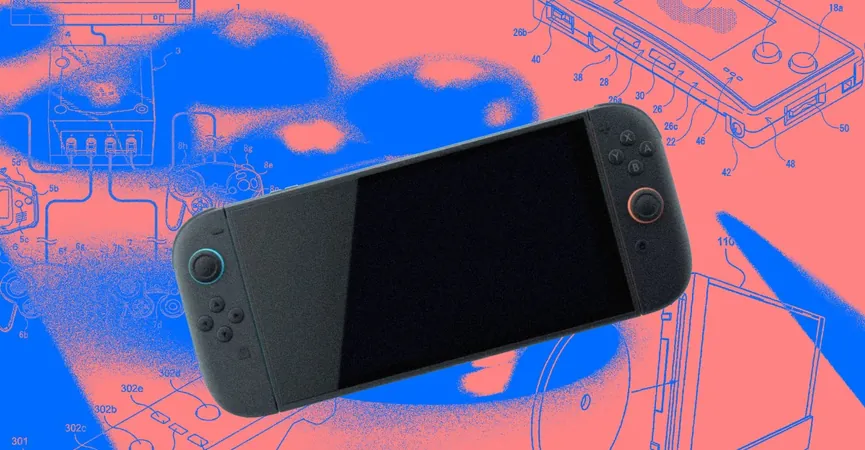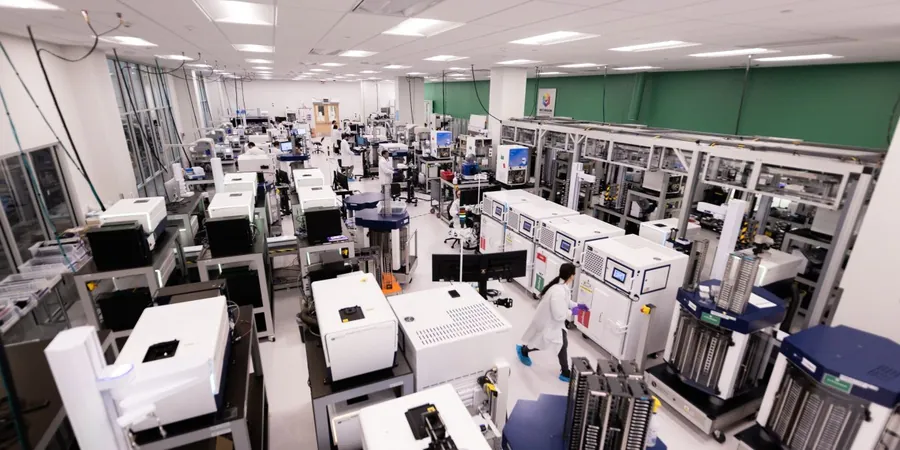
Nintendo Breaks the Mold: Why Specs No Longer Matter for Success
2025-03-31
Author: Noah
Nintendo Breaks the Mold: Why Specs No Longer Matter for Success
Nintendo made waves recently with the unveiling of the much-anticipated Switch 2, signaling a bold new chapter for the gaming giant. Yet, instead of sharing an exhaustive list of specifications, the company opted for a brief presentation that notably lacked essential details such as price, release date, or concrete game announcements—aside from a cheeky hint at a new Mario Kart title. This deliberate omission tells us something profound: Nintendo has bravely strayed from the industry norm where specs were once king.
In the past, Nintendo’s consoles were often pitted against their competitors based on technical prowess. From the enhanced graphics of the Super Nintendo compared to the NES to the groundbreaking N64, which was named for its impressive processor, Nintendo historically competed on this battlefield. However, as we moved into the GameCube era, it became evident that something had to change. Console sales had dipped significantly, showing a stark contrast to the over 60 million units sold of the NES, compared to the GameCube's meager 20 million. Competing against the likes of Sony and Microsoft, two technology powerhouses, required a new strategy.
Enter the Wii, a revolutionary console that changed the gaming landscape with its focus on accessibility and fun rather than sheer power. Although the Wii was humorously dubbed 'two GameCubes and some duct tape,' it would go on to deliver an unprecedented success thanks to titles like Wii Sports. The game’s unique mechanics, engaging all kinds of players with its motion control, propelled it to become one of the highest-selling games of all time. This was a clear shift in strategy, branded as the 'blue ocean' strategy by Nintendo. The company aimed to draw in players who felt alienated by games that had become overly complex and visually demanding.
By focusing on innovation rather than specifications, Nintendo opened its doors to a broader audience. The Wii and subsequent successes like the Nintendo DS—known for seamlessly integrating touchscreen controls long before the smartphone revolution—served as perfect illustrations of this philosophy. The Wii went on to sell over 100 million units, and the DS surpassed 150 million. In striking contrast, more technically advanced competitors struggled against these gaming juggernauts.
However, navigating a successful console direction isn’t without its hiccups, as seen with the Wii U, an attempt that fell flat when trying to merge home and portable gaming. Yet, embracing the user experience over raw specs has afforded Nintendo unparalleled success in a time when the video game industry grapples with considerable challenges.
The Switch epitomizes this philosophy, functioning as both a portable device and a home console. It stands against the might of PlayStation and Xbox, yet reports suggest it could become Nintendo's best-selling console ever—possibly even surpassing the iconic PS2. Its charm lies in the simple premise: portable gaming at your fingertips, combined with a significant roster of unique titles that can be developed more sustainably.
As for the recent Switch 2 reveal, Nintendo did not need to emphasize specs. The gaming community can trust that whatever powers the new system will be sufficient for the next big franchise titles. The main takeaway isn’t in the hardware details but the fundamental idea: the Switch 2 aims to enhance the beloved format of the original. In a world where gaming hardware is often overshadowed by performance stats and graphics power, Nintendo continues to champion a return to the essence of fun and engagement. As the gaming landscape evolves, Nintendo's refreshing approach might just be the catalyst needed to reignite the spark in an industry hungry for innovation.









 Brasil (PT)
Brasil (PT)
 Canada (EN)
Canada (EN)
 Chile (ES)
Chile (ES)
 Česko (CS)
Česko (CS)
 대한민국 (KO)
대한민국 (KO)
 España (ES)
España (ES)
 France (FR)
France (FR)
 Hong Kong (EN)
Hong Kong (EN)
 Italia (IT)
Italia (IT)
 日本 (JA)
日本 (JA)
 Magyarország (HU)
Magyarország (HU)
 Norge (NO)
Norge (NO)
 Polska (PL)
Polska (PL)
 Schweiz (DE)
Schweiz (DE)
 Singapore (EN)
Singapore (EN)
 Sverige (SV)
Sverige (SV)
 Suomi (FI)
Suomi (FI)
 Türkiye (TR)
Türkiye (TR)
 الإمارات العربية المتحدة (AR)
الإمارات العربية المتحدة (AR)